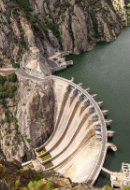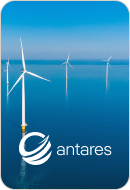10 relevant terms hydropower
Top 10 most relevant terms in hydropower
Energy efficiency Water Hydroelectric power
Hydropower is widely known, but how many concepts associated with this renewable energy are we able to define? Therefore, we propose 10 relevant terms to understand hydropower and its key role in increasing sustainability and the energy transition.
Hydropower dates back to the first mills that used water power to grind grain. In the 19th century, generators were added to this type of energy, giving rise to what we know today as hydroelectric energy, the potential of which is currently immense. Not only because it is 100% renewable energy, but also because it does not produce polluting emissions and has the enormous advantage of being able to respond to the needs of demand in real time. This makes it a fundamental tool for increasing security and guaranteeing electricity supply.
To get a better understanding of this energy, we are going to analyse the 10 most relevant terms of the energy generated in a hydroelectric power plant. From what exactly a dam is and how it differs from a reservoir to how a hydro turbine works.
Top 10 most relevant hydropower terms
Dam
A dam is a civil work built to store and regulate water. In general, it is built across a watercourse in such a way as to allow the accumulation of the natural contributions of a river, but it can also be located outside natural watercourses, allowing the creation of reservoirs fed by hydraulic conduits. There are different types of dams depending on the materials they are built with, their shape and even their purpose. In general, these structures are designed to divert a watercourse, or to store and manage the natural contributions of rivers, discharging them on demand according to the established uses, among which are fundamentally hydroelectric, supply and irrigation.
Reservoir
A reservoir is the volume of water accumulated by means of a dam, the origin of which may be due to the contribution of the river it regulates or to water transfers from hydraulic conduits.
Head
The head is the height between the level of the upper reservoir and the level in the channel or reservoir below which the water is returned.
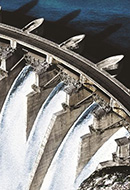
Types of dams
There are different types of dams depending on their materials or mechanisms.
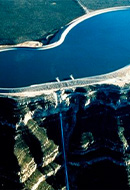
Pumped-storage hydropower plants
Do you know what pumped-storage hydropower stations are used for?
Spillway
The spillway is the structure designed in a dam to safely drain inflows into a reservoir in flood situations. These structures can be located on the dam itself or in a separate circuit and can be controlled by gates.
Hydraulic circuit
The hydraulic circuit is made up of all the elements through which the flow is diverted from a reservoir to a watercourse or to another reservoir. In the case where the flow flows at atmospheric pressure, this element of the circuit is called a channel, while in the case where it operates at pressure and in a closed section it is called a penstock.
Gate
The gates are the mechanical devices used in dams and hydraulic circuits to regulate the flow of water.
Hydraulic turbine
A hydraulic turbine is an element located in a hydraulic circuit that harnesses the energy of a fluid passing through it to produce a rotational movement which, transferred by means of a shaft, is transferred to an electrical generator that transforms mechanical energy into electrical energy.
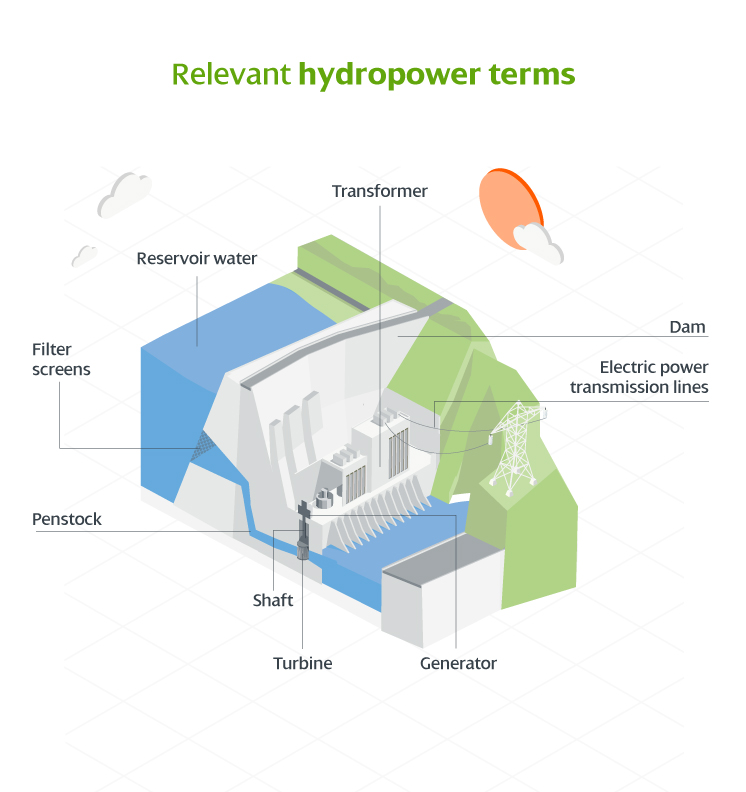
 SEE INFOGRAPHIC: Most relevant terms in hydropower [PDF]
SEE INFOGRAPHIC: Most relevant terms in hydropower [PDF]
Depending on their functionality, hydroelectric power plants are classified as follows:
Flowing water plants
The operation of the plant adapts to the flow regime of the river, without altering it, simply diverting it through a hydraulic circuit. These plants do not have a large storage capacity and operate continuously, although they vary throughout the year depending on the natural flow of the river. The energy produced cannot be adapted to the needs of covering electricity demand.
Control centres
This type of installation allows water to be stored and its operation to be regulated to meet the needs of demand. The storage capacity is achieved by means of a reservoir located upstream of the plant and, depending on its capacity, seasonal, annual or even hyper-annual regulation is used.
Reversible or pumped storage power stations
Pumped hydroelectric storage stations, unlike the previous ones, allow water to flow upwards from the lower reservoir to the upper reservoir.
These installations, while generating electricity, are capable of accumulating electrical energy by pumping water to a higher reservoir, contributing to a greater generation of non-manageable renewable energy, also contributing stability, security and sustainability to the electricity system without creating any type of atmospheric emissions.






